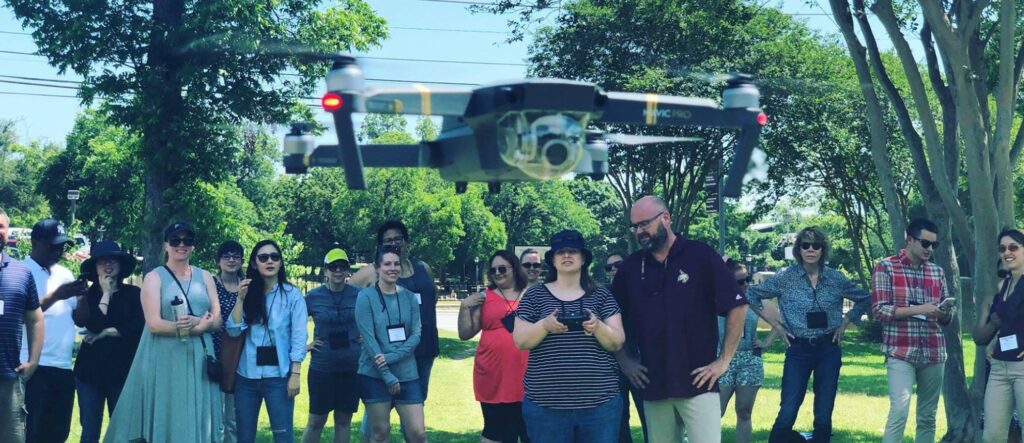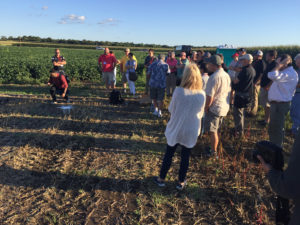
Instructor: Dale Blasingame
July 4-8
Zoom July 8, 1-5pm CT
Description
This week we turn our attention to the skies – but not too far high in the sky. We’re talking about drones in this module and the incredible strides made with this technology in a short period of time. The idea of drone journalism and drone education is less than a decade old – so you’re still getting into this area in the relatively early stages.

Personally, I came to academia from a TV news background, where we had ready access to a helicopter for aerial footage. So the idea behind drone journalism resonated quickly with me. The true, deep dive happened in August of 2016, when I flew to Nebraska to be part of the very first Drone Journalism Bootcamp, which was hosted by Matt Waite, the godfather of drone education. (Yes, we flew drones in a corn field in Nebraska.)
Those three days of instruction left me feeling like I would never learn everything I needed. I’m here to tell you it all works out. Promise! Now six years later, I’ve created four classes on drones, taught NASA education specialists to take the drone certification exam and spoken on several panels about drone education at international conferences. Trust me. You can do this. You just have to dive in.
In the following video, I’ll walk you though the different types of drones, different uses of drones, a brief explanation of the FAA’s Part 107 for commercial drone piloting and some of the main rules of Part 107.
Online Exercises & Materials
Additional Resources and Examples
Watch: Safety and ethics are often top of mind, with good reason, when it comes to drone journalism. Matt Waite addressed this topic in a TEDx talk back in 2014. A lot has changed in the world of drones since this talk, but Matt set the stage for a lot of the discussions that came in the following years.
Read: Poynter’s Drone Journalism Ethics Policy
Watch: Ben Kreimer, one of Matt’s first drone students and a frequent collaborator with us here at Texas State, is one of the leading voices in using drones for 3D modeling and photogrammetry. Here’s a portion of a class he taught on emerging technologies. The video should start at the 32:39 mark, and I’d encourage you to watch through the 50:41 mark. This gives you an idea of Ben and other technologists use drones in high-level, immersive storytelling. (We’ll discuss teaching a photogrammetry class during our Friday Zoom meeting.)
Discussion Assignment
This week, we’ll join a conversation on Slack with you in the #drones channel about these questions:
- Have you ever flown a drone before? If so, when/where/why? If not, what are your thoughts about flying? Worried about safety? Privacy concerns? Would you be nervous? Scared? It’s totally okay to be – but let’s talk about it.
- How can drones add to research you’re already doing or a project in your specific area of expertise? Think big here – even if it’s beyond your scope of possibilities.
Studying for Part 107
With study materials involving drones, you often get what you pay for. There are a lot of not-so-good guides on YouTube and the web, so be careful.
If you’re interested in checking out my Part 107 course material, which is quite in-depth, just shoot me a message in Slack. I’m happy to share all my resources/videos with you.
Beyond that, the best resource for studying to take the Part 107 exam is from RemotePilot101.com. It’s $150 for a subscription, but it’s a lifetime subscription. Remote Pilot 101 is what I modeled my first drones class after, and I can’t speak highly enough about their instructional videos.
Module Evaluation
After each module, you will be asked to do an evaluation. Go to the link for the PhDigital 2022 Zoom Modules Evaluation and select the module you are reviewing. Please do this as soon as you can after the Zoom session.
